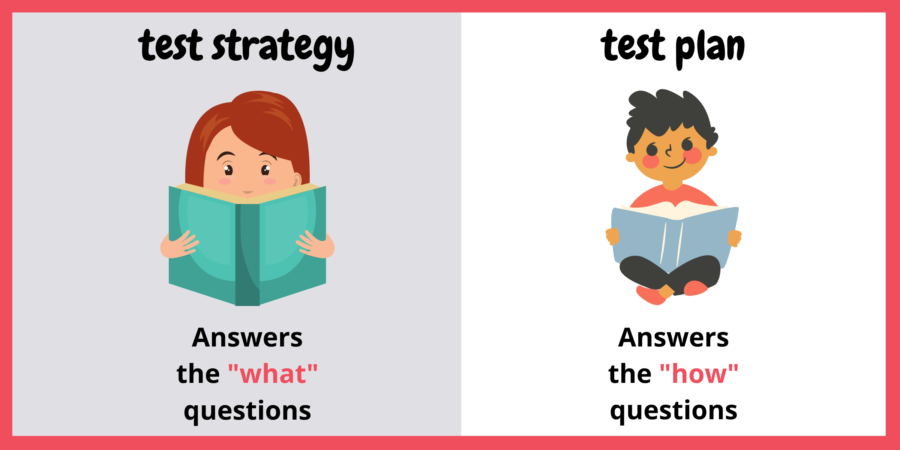Author

Blogs
Article & Observations About Diverse Teams Working Better Together
Test Strategy vs Test Plan: What’s the Difference?
Test Plan vs Test Strategy
As a software tester, you may find yourself tasked with writing two documents that sound very similar: test strategy and test plan.
Both of these are important documents that software testers prepare before beginning a project, but each serves a different purpose. And knowing the difference can be useful so that you can understand how a client's testing project will be carried out. Writing a test plan and test strategy is an important skill that every software tester should master—and knowing the difference between test plan vs test strategy documents can come in handy when you're interviewing at a software testing firm.
Here's everything you need to know about the two documents.
 In This Article
In This ArticleTest Strategy vs Test Plan: What’s the Difference?
Test Plan vs Test Strategy
What is a Test Plan?
What is a Test Strategy?
Components of Test Strategy Documents
Fields to be Filled Out in a Test Strategy Document
Difference Between Test Strategy vs Test Plan
Test Strategy vs Test Plan: Know the Difference
FAQs
Q. How do you write a test plan and a test strategy?
Q. Why is it important to know the difference between a test plan and test strategy?
Q. Is the mobile application test plan document differ from the software test plan?
What is Test Plan?
A test plan is defined as a document created by the software testing firm that outlines the various actions to be executed during the testing process, including mobile app testing, functional testing, manual testing, and automated testing. Test plans answer the "how" questions about a software testing project, such as:
- How are we going to test the software?
- How will the testing occur?
- How many cycles of testing will there be?
- How will the testing be coordinated?
You can think of a test plan as an outline of your software testing project, as it describes the assets, approach, and the time table for each portion of the testing. It will detail the features to be tested, the test strategies and techniques that the software testing team will use, and more.
Test plans are fluid in nature and can vary from one software product to another. They're important because they help software testing firms and their clients stay on the same page in regards to the type of work that will be carried out.
Test plans are usually written by test managers or test leads based on input from team members. Quality software test plans contain several fields to be filled out, such as the following:
- Introduction: a brief introduction of the software application to be tested
- Purpose and scope: the overall purpose and scope of the testing
- Testing strategy: the testing approach or approaches that will be used
- Features to be tested: describes what specific features of the software will be tested
- Features not to be tested: exactly the opposite; lists the features of the software that will not be tested
- Test deliverables: the different types of test findings to be reported such as test cases and test results
- Environmental needs: any environment-specific need for the project
- Responsibilities: lists the team members and other resources involved in the testing project and their responsibilities
- Training: the training requirements of specific resources
- Tools: list of tools used if applicable
To summarize, a test plan goes into great detail about the testing project and how it will be carried out.
If you are interested in creating an effective test plan, check out a guide on creating the perfect document.
What is a Test Strategy?
A test strategy is a more high-level document that outlines the project in broader terms, usually including a set of instructions or guidelines about how the testing will be carried out. Where the test plan goes into a lot of detail about a project, the test strategy gives a 50,000 foot view of it. Yet it is needed to clearly define the exact software testing approach and testing objectives of the software application.
The test strategy addresses the "what" questions surrounding the testing project, such as:
- What are the high level test objectives? Or, what is it we're trying to accomplish?
- What types of testing will we do such as functional, aggression, etc.?
- What are some of the risks and mitigations to those risks?
- What is the defining point in which testing is done on the project, or how we will recognize when testing can be considered complete?
- What are the things that we are going to test?
Your test strategy has to be one single document, whereas there may be multiple test plan documents to support that strategy.
It is tailored to your audience - stakeholders and senior management team you need approval from. And unlike a test plan, which can be modified during the course of a project, the test strategy is a static document that doesn't change.
Components of Test Strategy Documents:
There are usually four components or sections of a test strategy:
1. The scope; what are the things within the scope of testing and the things not in the scope
2. Test approach - what types of testing will be conducted
3. Environments - where are we going to be doing our testing?
4. Key deliverables - your clients want to know what are they paying for
Filleds to be Filled Out in a Test Srtategy Document:
- Introduction – A brief introduction to the purpose and scope of the document
- Standards to use – The different standards or set of guidelines to be followed
- Risks and Mitigations – The different risks associated with testing and their mitigation strategies
- Entry Criteria – The pre-requisites that must be performed before testing can start
- Exit Criteria – The criteria defining when the testing can be stopped
- Test design techniques – The test design techniques to be used like – equivalence partitioning, boundary value analysis, etc.
- Test environment – This defines which hardware/3rd party is needed to fulfill the requirements, of where the product is going to be tested
- Configuration management of testware – Specification of the right version of testware for testing
- Test process improvement – The approaches to use for improving the test process
- Approvals – The persons approving the test strategy document
Difference Between Test Strategy vs Test Plan
Still confused? It can be useful to see the differences between a test plan and test strategy document at a glance:
Test plan: Specific to a particular project
Test strategy: Usually for a complete organization
Test plan: Prepared by the test lead of test manager
Test strategy: Usually prepared by the project manager
Test plan: Describes the testing activities in detail such as the techniques used, schedule, and resources
Test strategy: Describes the high-level test design techniques to be used such as environment specifics
Test plan: outlines features to be tested, components not to be tested, approach to testing, pass-fail criteria, and more
Test strategy: includes scope, test approach, testing tools, test environment specs, and more
Test plan: Is a fluid document that can be changed or updated
Test strategy: Static document that is not modified
Test Strategy vs Test Plan: Know the Difference

Many people get these two documents confused, but it's important to know the difference between a test plan and a test strategy because both set expectations for the testing team and the client. With practice, you can become a pro at writing both and knowing what information each one covers, boosting your confidence when you outline your testing plan to clients.
FAQs
Q. How do you write a test plan and a test strategy?
A. It doesn't matter which of these documents you write first; what matters is that each one is uniques and tailored for the project and client at hand. You don't want to copy a test plan and test strategy from one client to another.
You can think of a test strategy as helping to plan the test procedure while the test plan is then used to carry out the testing process.
Q. Why is it important to know the difference between a test plan and test strategy?
A. Knowing the difference between test plan and test strategy documents helps set expectations for your team and your clients before each software testing project.
Q. Is the mobile application test plan document differ from the software test plan?
A. The mobile application test plan document does differ from the software test plan. The main difference is that mobile devices have different hardware, operating systems, and form factors than traditional software. As a result, the mobile app testing process must take into account these variations and plan accordingly. Additionally, mobile applications often rely on external services and connections that must be tested to ensure proper functioning. Therefore, the mobile application test plan document must include specific steps to test mobile apps on different mobile devices and any external services that are integrated.
Helpful Resources:
About the Author
Jill Willcox has worked on accessibility issues for most of her professional career. Iterators is an inclusive women-owned small business (WOSB) certified by the Small Business Administration and WBENC. We provide software testing services for websites, mobile apps, enterprise software, and PDF remediation services, rendering PDFs ADA compliant.

